Fishes
Media
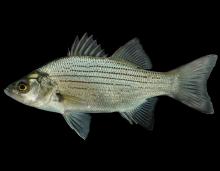
Species Types
Scientific Name
Morone chrysops
Description
The white bass is one of the most important game fish in Missouri’s large impoundments. It inhabits the deeper pools of streams and the open water of lakes and reservoirs.
Media

Species Types
Scientific Name
Lepisosteus osseus
Description
The longnose gar has a longer, narrower snout than our other three gars and is the most widely distributed gar in Missouri.
Media

Species Types
Scientific Name
Percina caprodes
Description
The logperch occurs in small- to medium-sized rivers and along gravel shorelines in reservoirs. Our largest darter has a distinctly conical snout that overhangs the mouth, and 15 to 20 vertical dark bars on a light background.
Media
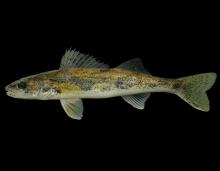
Species Types
Scientific Name
Sander canadensis
Description
The sauger is closely related to the walleye. In Missouri, it's found mostly in the Mississippi and Missouri rivers and suitable tributaries, plus the Eleven Point River. It prefers flowing water and often swift current.
Media

Species Types
Scientific Name
Lepomis microlophus
Description
The redear sunfish is deep and slab-sided, with a small mouth, with the upper jaw not reaching past the front of the eye. In natural waters, it is confined to the southern half of Missouri, but it is widely stocked in small reservoirs and ponds.
Media
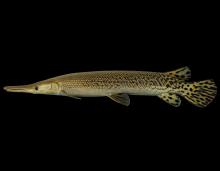
Species Types
Scientific Name
Atractosteus spatula (formerly Lepisosteus spatula)
Description
The alligator gar is Missouri's largest gar and has a distinctively short, broad snout. Populations are declining. This fish once occurred in the Mississippi River at least as far upstream as the mouth of the Illinois River and in major tributaries.
Media
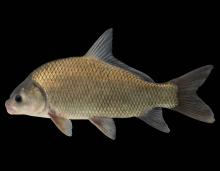
Species Types
Scientific Name
Ictiobus bulbalus
Description
The smallmouth buffalo is nearly as common and widespread in Missouri as the bigmouth buffalo. Identify it by its small, nearly horizontal mouth and the strongly keeled forward part of its back.
Media
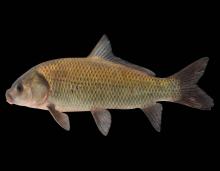
Species Types
Scientific Name
Ictiobus niger
Description
Compared to Missouri’s other buffalofishes, the black buffalo is less abundant and widespread, and of the three, it occurs most often in places with strong currents.
Media
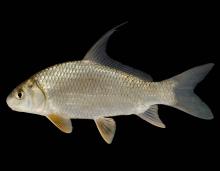
Species Types
Scientific Name
Carpiodes cyprinus
Description
Like our other carpsuckers, the quillback has a deep, rather thick body and a long, sickle-shaped dorsal fin. This silvery, hump-backed fish is widely distributed in Missouri.
Media

Species Types
Scientific Name
Moxostoma macrolepidotum
Description
The shorthead redhorse is the most widely distributed redhorse sucker in Missouri, occurring nearly statewide. No other Missouri redhorse is as adaptable in its habitat requirements. Many specimens have a pea-shaped swelling on the upper lip.
See Also


Media

Species Types
Scientific Name
Amphiuma tridactylum
Description
The three-toed amphiuma is an eel-like, completely aquatic salamander. It has very small forelimbs and hind limbs, each with three tiny toes. In Missouri it’s found only in the Bootheel region.
Media

Species Types
Scientific Name
Siren intermedia nettingi
Description
The western lesser siren is an eel-like, aquatic salamander with external gills, small eyes, small forelimbs with four toes, and no hind limbs. In Missouri, it’s found mostly in the Bootheel and northward in counties near the Mississippi River.
About Fishes in Missouri
Missouri has more than 200 kinds of fish, more than are found in most neighboring states. Fishes live in water, breathe with gills, and have fins instead of legs. Most are covered with scales. Most fish in Missouri “look” like fish and could never be confused with anything else. True, lampreys and eels have snakelike bodies — but they also have fins and smooth, slimy skin, which snakes do not.





















